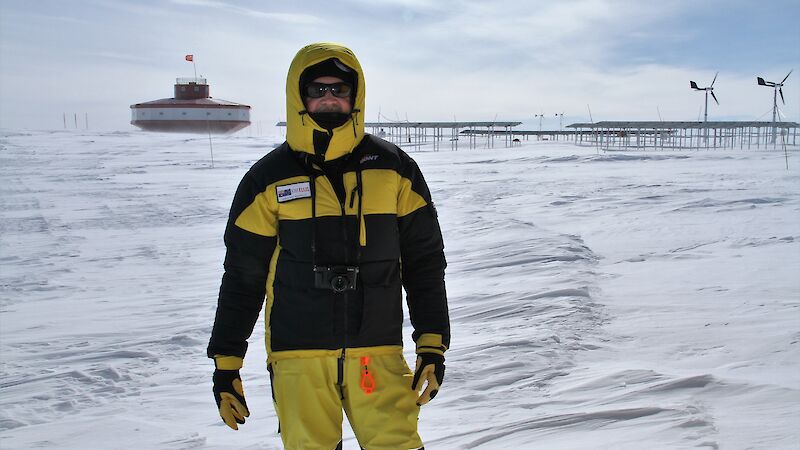We’re living through a world of change. Most of us are experiencing disruption to our lives and livelihoods due to the COVID-19 pandemic and the Australian Antarctic Program is no exception. The COVID-19 pandemic has meant substantial changes to our Antarctic and Southern Ocean operations, this year and into the next. This includes a limit on the movement of people south on ships and planes, a reduced ability to recruit and train new teams for next summer, disruptions to our supply chains, and delays to work on major projects.
In spite of these limits, the Australian Antarctic Program continues with a transformational change in how it operates in Antarctica, with a new icebreaker, upgrades to station infrastructure, a reinvigorated traverse capability, and the Davis Aerodrome Project.
Our teams have responded quickly to the change, bringing resilience, adaptability and good humour to the challenge of managing the risks to delayed projects, adapting our program and continuing to deliver on our scientific and operational commitments.
In March we bade farewell to our much-loved icebreaker, Aurora Australis. This was an important milestone for the Australian Antarctic Program after 30 years of Antarctic service, however the pandemic scuppered our plans for a series of farewell events. The Aurora will live on in the hearts and minds of those who sailed on her, and now in the digital world too – with our 2019-20 Arts Fellows, Wild System, creating a virtual version of the ship and their voyage for an interactive exhibition.
While final harbour acceptance and sea acceptance trials for our replacement icebreaker, RSV Nuyina, have been delayed, we have sought an interim shipping solution. The Ice Class Multi Purpose Vessel (MPV) Everest will resupply our stations and change over expedition teams (see In Brief). Despite delays to testing, the Nuyina is more than 98 per cent complete and is looking spectacular.
Like so many aspects of our business, the Australian Antarctic Magazine has also been undergoing a review. Since its inception in 2001, the magazine has been published twice a year, and made available online. We’re excited to announce that with an imminent upgrade to our website (www.antarctica.gov.au), we will bring you an enhanced digital version of the magazine, with more interactive content. We will also move to one annual print issue – you can look forward to the next one in June 2021.
Before the pandemic hit, I was fortunate to spend two months conducting the most extensive international inspection program Australia has ever undertaken in Antarctica – in accordance with the Antarctic Treaty and its Protocol on Environmental Protection. My colleagues and I, from the Australian Antarctic Division and the Department of Foreign Affairs and Trade, inspected six Antarctic stations from the Republic of Korea, Germany, China, Russia and Belarus. We also visited six other stations operated by the United States, New Zealand, Italy, China, India and Russia.
We were warmly welcomed at all the facilities we visited, reflecting the spirit of international cooperation that is fundamental to all Antarctic endeavours. Our inspections found a high level of compliance with the environmental and non-militarisation principles of the Antarctic Treaty system. We were also very pleased to see examples of the scientific research being undertaken, and the operational practices of other Antarctic nations. Our inspection report will be available following consideration by the Antarctic Treaty Consultative Parties.
Unfortunately the pandemic has caused the cancellation of what would have been a significant international gathering of Antarctic scientists and operators in Hobart in July – the combined Scientific Committee on Antarctic Research Open Science Conference, and the Council of Managers of National Antarctic Programs Annual General Meeting.
While there have been disappointments this year, the good news is that Australia’s Antarctic and sub-Antarctic stations remain virus-free. Thanks to the hard work and planning of our doctors and other dedicated teams across the Division, Antarctica is now the safest place to be.
I hope you and your families are safe and healthy, and I look forward to reporting on positive developments in the Australian Antarctic Program in the next issue of the Australian Antarctic Magazine, a year from now.

